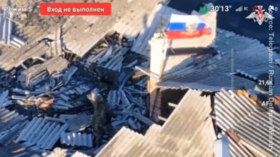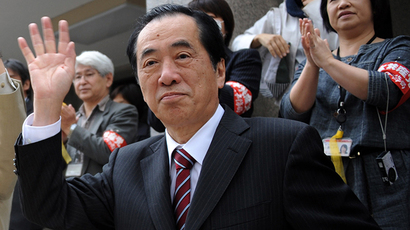Fukushima apocalypse: Years of ‘duct tape fixes’ could result in ‘millions of deaths’
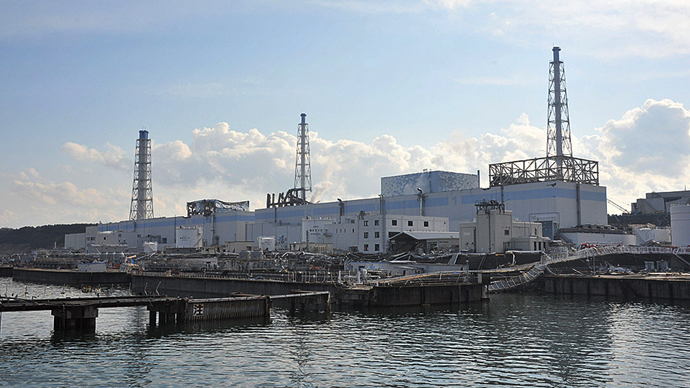
Even the tiniest mistake during an operation to extract over 1,300 fuel rods at the crippled Fukushima nuclear power plant in Japan could lead to a series of cascading failures with an apocalyptic outcome, fallout researcher Christina Consolo told RT.
Fukushima operator TEPCO wants to extract 400 tons worth of spent fuel rods stored in a pool at the plant’s damaged Reactor No. 4. The removal would have to be done manually from the top store of the damaged building in the radiation-contaminated environment.
In the worst-case scenario, a mishandled rod may go critical, resulting in an above-ground meltdown releasing radioactive fallout with no way to stop it, said Consolo, who is the founder and host of Nuked Radio. But leaving the things as they are is not an option, because statistical risk of a similarly bad outcome increases every day, she said.
RT:How serious is the fuel rod situation compared to the danger of contaminated water build-up which we already know about?
Christina Consolo: Although fuel rod removal happens on a daily basis at the 430+ nuclear sites around the world, it is a very delicate procedure even under the best of circumstances. What makes fuel removal at Fukushima so dangerous and complex is that it will be attempted on a fuel pool whose integrity has been severely compromised. However, it must be attempted as Reactor 4 has the most significant problems structurally, and this pool is on the top floor of the building.
There are numerous other reasons that this will be a dangerous undertaking.
- The racks inside the pool that contain this fuel were damaged by the explosion in the early days of the accident.
- Zirconium cladding which encased the rods burned when water levels dropped, but to what extent the rods have been damaged is not known, and probably won't be until removal is attempted.
- Saltwater cooling has caused corrosion of the pool walls, and probably the fuel rods and racks.
- The building is sinking.
- The cranes that normally lift the fuel were destroyed.
- Computer-guided removal will not be possible; everything will have to be done manually.
- TEPCO cannot attempt this process without humans, which will manage this enormous task while being bombarded with radiation during the extraction and casking.
- The process of removing each rod will have to be repeated over 1,300 times without incident.
- Moving damaged nuclear fuel under such complex conditions could result in a criticality if the rods come into close proximity to one another, which would then set off a chain reaction that cannot be stopped.
What could potentially happen is the contents of the pool could burn and/or explode, and the entire structure sustain further damage or collapse. This chain reaction process could be self-sustaining and go on for a long time. This is the apocalyptic scenario in a nutshell.
The water build-up is an extraordinarily difficult problem in and of itself, and as anyone with a leaky basement knows, water always 'finds a way.’
'Trivial in light of other problems at Fukushima, water situation could culminate in the chain reaction scenario'
At Fukushima, they are dealing with massive amounts of groundwater that flow through the property, and the endless pouring that must be kept up 24/7/365 to keep things from getting worse. Recently there appears to be subsidence issues and liquefaction under the plant.
TEPCO has decided to pump the water out of these buildings. However, pumping water out of the buildings is only going to increase the flow rate and create more of these ground issues around the reactors. An enormous undertaking - but one that needs to be considered for long-term preservation of the integrity of the site - is channelling the water away, like a drain tile installed around the perimeter of a house with a leaky basement, but on an epic scale.
Without this effort, the soils will further deteriorate, structural shift will occur, and subsequently the contents of the pools will shift too.

Any water that flows into those buildings also becomes highly radioactive, as it is likely coming into contact with melted fuel.
Without knowing the extent of the current liquefaction and its location, the location of the melted fuel, how long TEPCO has been pumping out water, or when the next earthquake will hit, it is impossible to predict how soon this could occur from the water problem/subsidence issue alone. But undoubtedly, pumping water out of the buildings is just encouraging the flow, and this water problem needs to be remedied and redirected as soon as possible.
RT:Given all the complications that could arise with extracting the fuel rods, which are the most serious, in your opinion?
CC: The most serious complication would be anything that leads to a nuclear chain reaction. And as outlined above, there are many different ways this could occur. In a fuel pool containing damaged rods and racks, it could potentially start up on its own at anytime. TEPCO has been incredibly lucky that this hasn't happened so far.
'One of the worst, but most important jobs anyone has ever had to do'
My second biggest concern would be the physical and mental fitness of the workers that will be in such close proximity to exposed fuel during this extraction process. They will be the ones guiding this operation, and will need to be in the highest state of alertness to have any chance at all of executing this plan manually and successfully. Many of their senses, most importantly eyesight, will be hindered by the apparatus that will need to be worn during their exposure, to prevent immediate death from lifting compromised fuel rods out of the pool and placing them in casks, or in the common spent fuel pool located a short distance away.
Think for a moment what that might be like through the eyes of one of these workers; it will be hot, uncomfortable, your senses shielded, and you would be filled with anxiety. You are standing on a building that is close to collapse. Even with the strongest protection possible, workers will have to be removed and replaced often. So you don't have the benefit of doing such a critical task and knowing and trusting your comrades, as they will frequently have to be replaced when their radiation dose limits are reached. If they exhibit physical or mental signs of radiation exposure, they will have be replaced more often.
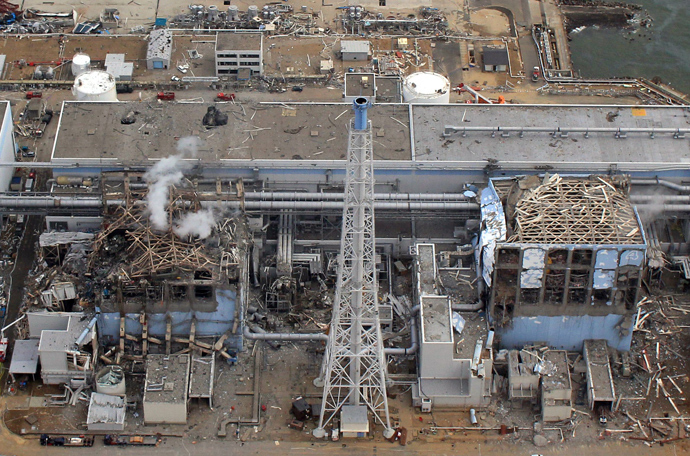
It will be one of the worst, but most important jobs anyone has
ever had to do. And even if executed flawlessly, there are still
many things that could go wrong.
RT:How do the potential consequences of failure to ensure safe extraction compare to other disasters of the sort – like Chernobyl, or the 2011 Fukushima meltdown?
CC: There really is no comparison. This will be an incredibly risky operation, in the presence of an enormous amount of nuclear material in close proximity. And as we have seen in the past, one seemingly innocuous failure at the site often translates into a series of cascading failures.
'The site has been propped up with duct tape and a kick-stand for over two years'
Many of their 'fixes' are only temporary, as there are so many issues to address, and cost always seems to be an enormous factor in what gets implemented and what doesn't.
As a comparison: Chernobyl was one reactor, in a rural area, a quarter of the size of one of the reactors at Fukushima. There was no 'spent fuel pool' to worry about. Chernobyl was treated in-situ...meaning everything was pretty much left where it was while the effort to contain it was made (and very expeditiously I might add) not only above ground, but below ground.
At Fukushima, we have six top-floor pools all loaded with fuel that eventually will have to be removed, the most important being Reactor 4, although Reactor 3 is in pretty bad shape too. Spent fuel pools were never intended for long-term storage, they were only to assist short-term movement of fuel. Using them as a long-term storage pool is a huge mistake that has become an 'acceptable' practice and repeated at every reactor site worldwide.
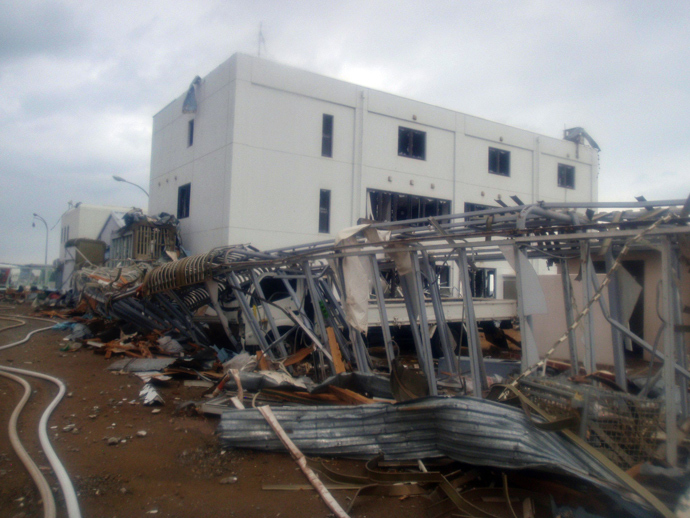
We have three 100-ton melted fuel blobs underground, but where
exactly they are located, no one knows. Whatever 'barriers' TEPCO
has put in place so far have failed. Efforts to decontaminate
radioactive water have failed. Robots have failed. Camera
equipment and temperature gauges...failed. Decontamination of
surrounding cities has failed.
'If and when the corium reaches the Tokyo aquifer, serious and expedient discussions will have to take place about evacuating 40 million people'
We have endless releases into the Pacific Ocean that will be ongoing for not only our lifetimes, but our children’s' lifetimes. We have 40 million people living in the Tokyo area nearby. We have continued releases from the underground corium that reminds us it is there occasionally with steam events and huge increases in radiation levels. Across the Pacific, we have at least two peer-reviewed scientific studies so far that have already provided evidence of increased mortality in North America, and thyroid problems in infants on the west coast states from our initial exposures.
We have increasing contamination of the food chain, through bioaccumulation and biomagnification. And a newly stated concern is the proximity of melted fuel in relation to the Tokyo aquifer that extends under the plant. If and when the corium reaches the Tokyo aquifer, serious and expedient discussions will have to take place about evacuating 40 million people from the greater metropolitan area. As impossible as this sounds, you cannot live in an area which does not have access to safe water.
The operation to begin removing fuel from such a severely damaged pool has never been attempted before. The rods are unwieldy and very heavy, each one weighing two-thirds of a ton. But it has to be done, unless there is some way to encase the entire building in concrete with the pool as it is. I don't know of anyone discussing that option, but it would seem much 'safer' than what they are about to attempt...but not without its own set of risks.
And all this collateral damage will continue for decades, if not centuries, even if things stay exactly the way they are now. But that is unlikely, as bad things happen like natural disasters and deterioration with time...earthquakes, subsidence, and corrosion, to name a few. Every day that goes by, the statistical risk increases for this apocalyptic scenario. No one can say or know how this will play out, except that millions of people will probably die even if things stay exactly as they are, and billions could die if things get any worse.
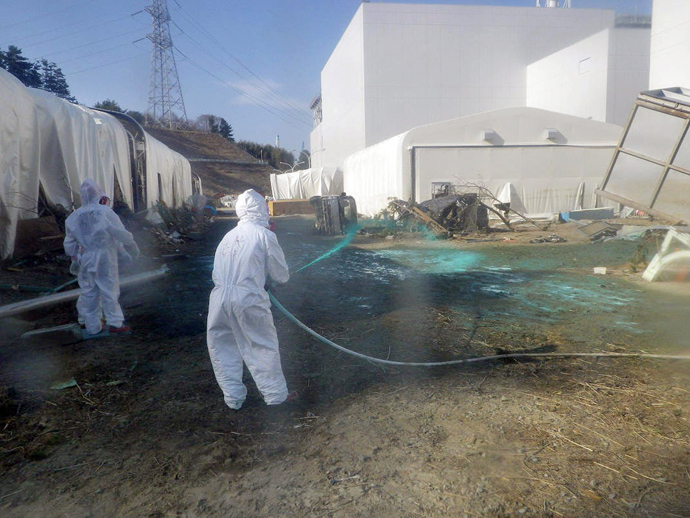
RT:Are the fuel rods in danger of falling victim to other factors, while the extraction process is ongoing? After all, it’s expected to take years before all 1,300+ rods are pulled out.
CC: Unfortunately yes, the fuel rods are in danger every day they remain in the pool. The more variables you add to this equation, and the more time that passes, the more risk you are exposed to. Each reactor and spent fuel pool has its own set of problems, and critical failure with any of them could ultimately have the end result of an above-ground, self-sustaining nuclear reaction. It will not be known if extraction of all the fuel will even be possible, as some of it may be severely damaged, until the attempt is made to remove it.
RT:Finally, what is the worst case scenario? What level of contamination are we looking at and how dire would the consequences be for the long-term health of the region?
CC: Extremely dire. This is a terrible answer to have to give, but the worst case scenario could play out in death to billions of people. A true apocalypse. Since we have been discussing Reactor 4, I'll stick to that problem in particular, but also understand that a weather event, power outage, earthquake, tsunami, cooling system failure, or explosion and fire in any way, shape, or form, at any location on the Fukushima site, could cascade into an event of that magnitude as well.
'Once the integrity of the pool is compromised that will lead to more criticalities'
At any time, following any of these possible events, or even all by itself, nuclear fuel in reactor 4's pool could become critical, mostly because it will heat up the pool to a point where water will burn off and the zirconium cladding will catch fire when it is exposed to air. This already happened at least once in this pool that we are aware of. It almost happened again recently after a rodent took out an electrical line and cooling was stopped for days.
Once the integrity of the pool is compromised that will likely lead to more criticalities, which then can spread to other fuel. The heat from this reaction would weaken the structure further, which could then collapse and the contents of the pool end up in a pile of rubble on the ground. This would release an enormous amount of radioactivity, which Arnie Gundersen has referred to as a “Gamma Shine Event” without precedence, and Dr. Christopher Busby has deemed an “Open-air super reactor spectacular.”
This would preclude anyone from not only being at Reactor 4, but at Reactors 1, 2, 3, 5, 6, the associated pools for each, and the common spent fuel pool. Humans could no longer monitor and continue cooling operations at any of the reactors and pools, thus putting the entire site at risk for a massive radioactive release.
'At least the northern half of Japan would be uninhabitable, and some researchers have argued that it already is'
Mathematically, it is almost impossible to quantify in terms of resulting contamination, and a separate math problem would need to be performed for every nuclear element contained within the fuel, and whether or not that fuel exploded, burned, fissioned, melted, or was doused with water to try to cool it off and poured into the ocean afterward.
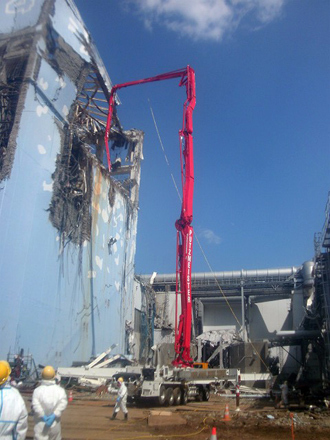
Some researchers have even ventured to say that other nuke plants on the east coast of Honshu may need to be evacuated if levels get too high, which will lead to subsequent failures/fires and explosions at these plants as well. Just how profound the effect will be on down-winders in North America, or the entire northern hemisphere for that matter, will literally depend on where the wind blows and where the rain falls, the duration and extent of a nuclear fire or chain-reaction event, and whether or not that reaction becomes self-sustaining. At least the northern half of Japan would be uninhabitable, and some researchers have argued that it already is.
This is already happening to the nuclear fuel in the ground under the plant, but now it would be happening above ground as well. There is no example historically to draw from on a scale of this magnitude. Everything is theory. But anyone who says this can't happen is not being truthful, because nobody really knows how bad things could get.
The most disturbing part of
all of this is that Fukushima has been this dangerous,
and precarious, since the second week of March 2011.
The ante will definitely be upped once the fuel removal
starts.
'The mainstream media, world governments, nuclear agencies, health organizations, weather reporters, and the health care industry has completely ignored three ongoing triple meltdowns that have never been contained'
An obvious attempt to downplay this disaster and its consequences have been repeated over and over again from 'experts' in the nuclear industry that also have a vested interest in their industry remaining intact. And, there has been a lot of misleading information released by TEPCO, which an hour or two of reading by a diligent reporter would have uncovered, in particular the definition of 'cold shutdown.’
Over 300 mainstream news outlets worldwide ran the erroneous 'cold shutdown' story repeatedly, which couldn't be further from the truth…[it was] yet another lie that was spun by TEPCO to placate the public, and perpetuated endlessly by the media and nuclear lobby.
Unfortunately, TEPCO waited until a severe emergency arose to finally report how bad things really are with this latest groundwater issue...if we are even being told the truth. Historically, everything TEPCO says always turns out to be much worse than they initially admit.
'Unfortunately there is no one better qualified to deal with this than the Russians, despite their own shortcomings'
I think the best chance of success is…that experts around the world drop everything they are doing to work on this problem, and have Russia either lead the containment effort or consult with them closely. They have the most experience, they have decades of data. They took their accident seriously and made a Herculean effort to contain it.
Of course we also know the Chernobyl accident was wrought with deception and lies as well, and some of that continues to this day, especially in terms of the ongoing health effects of children in the region, and monstrous birth defects. Unfortunately there is no one better qualified to deal with this than the Russians, despite their own shortcomings. Gorbachev tried to make up for his part in the cover-up of Chernobyl by opening orphanages throughout the region to deal with the affected children.

But as far as Fukushima goes, the only thing that matters now is if world leaders and experts join forces to help fix this situation. Regardless of what agendas they are trying to protect or hide, how much it will cost, the effect on Japan or the world’s economy, or what political chains this will yank.
The nuclear industry needs to come clean. If this leads to every reactor in the world being shut down, so be it. If the world governments truly care about their people and this planet, this is what needs to be done.
Renowned theoretical physicist Michio Kaku stated in an interview a few weeks after the initial accident that “TEPCO is literally hanging on by their fingernails.” They still are, and always have been. The Japanese have proven time and time again they are not capable of handling this disaster. Now we are entrusting them to execute the most dangerous fuel removal in history.
We are extremely lucky that this apocalyptic scenario hasn't happened yet, considering the state of Reactor 4. But for many, it is already too late. The initial explosions and spent fuel pool fires may have already sealed the fate of millions of people. Time will tell. Anyone who tells you otherwise is not being honest, because there is just no way to know.

